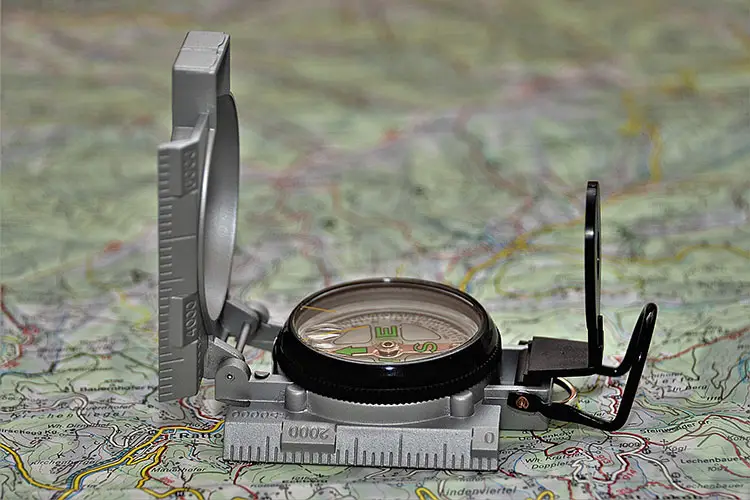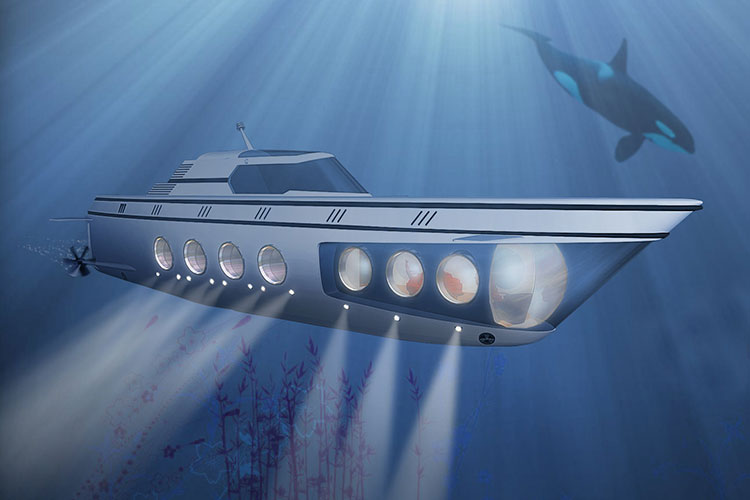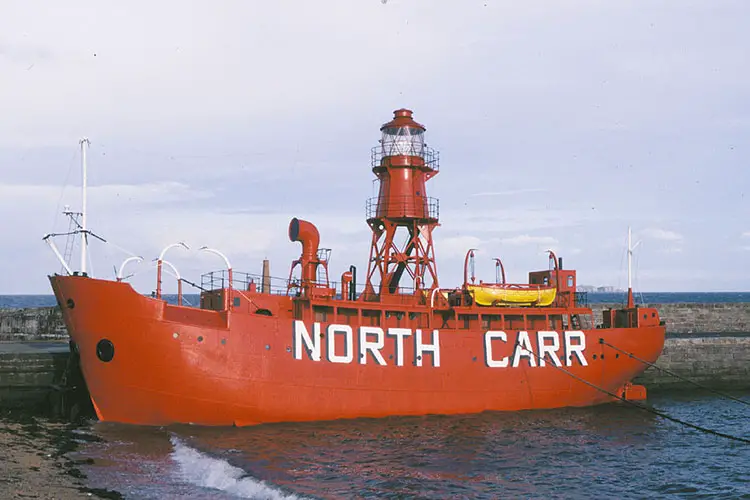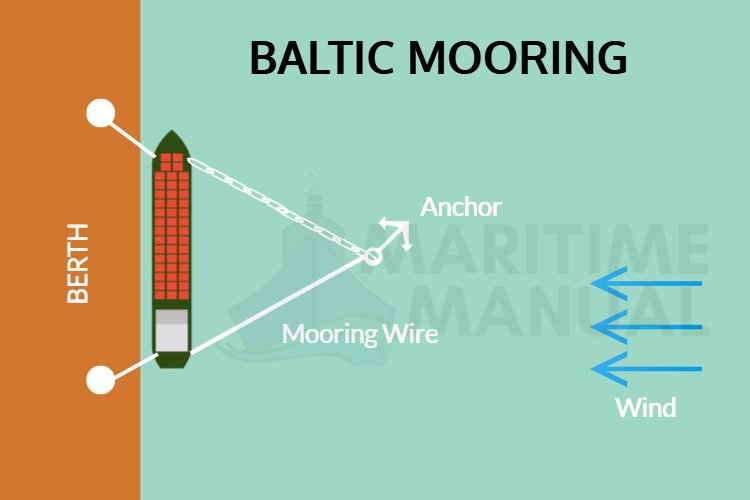20 Mechanical Measuring Tools And Gauges Used On Ships

To say that a ship is a complex machine would be a huge understatement. Modern ships are scientific marvels which encompass all streams of science and engineering. Every ship requires flawless integration of millions of parts and instruments. Regardless of the scientific advancements, a ship still relies heavily on navigation tools, mechanical measuring tools, and gauges.
These instruments are crucial for the proper operation of a ship.
Following are some of the different types of mechanical measuring tools and gauges used on ships. They are explained in brief. These are only some of the many devices that modern ships require.
20 Mechanical Measuring Tools And Gauges Used On Ships
1) Telescopic Feeler Gauge
This is a special type of feeler gauge. A telescopic Feeler gauge is an instrument used or inserted in areas that are remote or inaccessible to a normal feeler gauge. It is made up of steel and is flexible. It consists of a long feeler gauge that is inside a cover. The end of the instrument is a little curved. The telescopic feeler gauge is also known as a tongue gauge because of its appearance. It is not used as much as a standard feeler gauge and is only preferred in certain situations.
2) Poker Gauge
This is a particular type of measuring instrument. It is used to measure what is called the propeller shaft drop or propeller wear down. The measurement is taken from top to bottom. A Poker gauge is usually fitted on the sealing housing to take the reading. It is made up of steel. It is one of the most useful and vital instruments on a ship.
3) Bridge Gauge
This is a measuring instrument used to measure the amount of wearing of the main engine bearing. It is made up of steel. A bridge gauge checks the wear down. It is a somewhat less accurate measurement tool. A feeler gauge is required to complete the process of measuring with the help of a bridge gauge.
If a bridge gauge is not available on a ship for some reason another device could be used in its place. This device is known as a clock gauge. Unlike a bridge gauge, a clock gauge does not require the use of a feeler gauge to complete its process of measurement.
Also read: What is a Marine Sextant?
4) Ruler and Scales
These are the kinds of instruments that are used to measure different lengths. They can be used to measure all sorts of things like the height or weight of objects, the width of the spaces between gaps, the thickness of objects, the diameters of circular objects, and all other kinds of geometrical parameters. They can be in the form of a single plate of steel like a common ruler or can also be in the form of tapes. A lot of different instruments come under this category.
5) Liner Measurement Tool
A liner measurement tool (LDM) is used to measure the wear down. It can also be used to increase the diameter of the liner engine. LDM is also called a liner diameter measuring instrument. It is a set of straight assembled rods. These roads have marked lengths. They are monitored for a set period like a few hours or sometimes even one full day. Usually, a three-person team is assigned to monitor this device but if the operation is only for 3 hours one man can also do it.
6) American Wire Gauge
An American wire gauge or an AWG is a standardized wire gauge system. It was first used in 1857. AWG’s are called so because they were used predominantly in North America. An American wire gauge is used for measuring diameters of round non-ferrous, solid, or electrically conducting wires. They are based on logarithms.
There are several formulas available that are used to carry out measurements using American wire gauges. Nowadays, American wire gauges are also used to measure non-metallic wires to specify body piercing jewelry sizes. These are primarily used to specify or measure smaller sizes.
7) Bore Gauge
Bore gauge is a term that is used to refer to a set of different tools or instruments which are used to accurately measure holes. All of these tools are unique to their processes. This instrument can be of any type like a scale, a tape, a dial, or even a digital instrument. These include transfer gauges which are used to measure the size of a bore, inside micrometers that can measure bores directly, dial bore gauges which included a digital readout, or electronic or wireless bore gauges. These are some of the essential instruments when it comes to ships.
8) Caliper
A caliper or a pair of calipers is a measuring instrument used on-board ships. It is used to measure the distance between two opposite sides of an object. Two main types of calipers are used commonly. They are inside and outside calipers. As the name suggests, they are respectively applied to measure the internal diameter of an object and the external diameter of an object.
A kind of caliper, the Vernier Caliper is a measuring device that is used to measure the size of the distance between the two ends of an object with great accuracy. It has two scales namely the main scale and the Vernier scale both of which are needed to measure a particular object. Nowadays, even digital Vernier calipers are coming into the picture.
9) Micrometer
A micrometer is a measuring device that is usually used to measure the thickness of an object. It can measure much smaller values than a Vernier caliper and is also more accurate. Sometimes it is also known as a screw gauge as the measurements are taken with the help of a screw.
Micrometers can also come in large sizes depending on the kind of object that we want to measure the size of. Just like calipers, micrometers are also of two different types – Inside and Outside. Inside micrometers are used to measure the internal diameters of objects while outside micrometers are used to do the same with the external diameter.
10) Feeler Gauge
A feeler gauge is a measuring device that is used to measure the distances between gaps or radar the widths of gaps. They are most commonly used in the field of engineering but also play an important role in the marine industry.
A feeler gauge consists of fine and thick steel strips which have a marked thickness. This can help in clearly measuring the width of a gap between surfaces or bearings. The strips are also quite flexible. The strips or lengths of steel are also sometimes known as blades or leaves.
11) Depth Gauge
As the name suggests a depth gauge is an instrument used to measure the depth of anything including holes, slots, or even surfaces of objects. Usually, they are fitted to a drill to ensure that the hole that the drill makes is of the required length only and does not exceed it.
A dial gauge can be in the form of a scale, a dial, or even a digital instrument. It is also used in diving as a pressure gauge. It displays the equivalent depth in the water. Nowadays a more modern digital depth gauge is used. In the olden times, Analogue depth gauges were used.
12) Angle plate
An angle plate is a device or an instrument that is used to measure the angle between any two objects which are placed or joined together. It is made up of high-quality material like cast iron. This material is stabilized so that it does not move and provides inaccurate measurements. Angle plates are also used during marking out operations to hold the workpiece squares stable. Nowadays even adjustable angle plates are available in the market. They are also made up of high-quality material.
13) Flat Plate
As the name suggests, a flat plate is an instrument that is used to measure the flatness of an object or a surface. It is a precisely flat slab. A flat slab is uniformly thick all over. It may be made up of concrete. It can measure the flatness of an object when it is kept on the surface.
14) Dial Gauge
A dial gauge is an instrument that can be used in various measurement tools. It is also used separately for different purposes like measuring the trueness of a circular object. It consists of a circular dial that has many graduated or calibrated units. These units may or may not be the SI unit but rather the units relevant to the measurement. It also has a pointer that shows the measurement.
15) Crankshaft deflection gauge
A crankshaft deflection gauge is a digital instrument that is used to measure the crankshaft deflection of the marine engine as the name suggests. Crankshaft deflection is a quantity that is used to measure or detect misalignments in the main bearings of a ship.
16) Engine peak indicator
An engine peak indicator is an instrument that is used to measure the peak pressure which is generated inside an engine cylinder. It is generally used for internal combustion engines or even a compressor. It comes with a pressure indicator dial which may be digital or analog.
An engine indicator diagram tool is a cylindrical shaped device. It consists of a spring and a needle which are used to draw the indicator diagram of a specific cylinder. It has to be fixed on the indicator cock of the unit.
17) Planimeter
A planimeter is an instrument that is used to measure the area of any random or asymmetrical two-dimensional object. It is very useful in constructing or studying maps for a voyage or an operation. It reduces human efforts by measuring areas of random objects that would otherwise take a much longer time.
18) Lead wire
It is lead wire is a metallic wire which can vary in thickness. It is also a conventional method in which lead wire or lead balls can be used to measure the clearance or wear down between any two mating surfaces. In this method, the lead wire of the lead ball is being used as of a specific thickness or dimensions.
The wire or the ball is kept between the two surfaces, and these are tightened against each other. The kind of increase in the width of the object as a whole can help us determine the total wear down or clearance.
19) Oil gauging tapes
Oil gauging tapes are the instruments that are used to measure the level of any liquid in the tank of a ship. These liquids can be water, lubricants of different types, etc. They are also known as sounding tapes.
One method to measure the liquid level is merely lowering the tape into the tank in which you want to measure the tip of the bob on the tape touches the bottom of the tank. When we take out the tape, we can measure the level of the liquid by using the scale on the tape. This method is called innage.
When the tank is not full, the same method can be applied by taking out two values. One value is the distance between the top of the tank to the surface of the liquid. The other is the total height of the tank which is a known value. The required amount of the level of the liquid can be found out by using simple subtraction.
20) Seawater hydrometer
A seawater water hydrometer is a small instrument that is made up of glass. It is used to measure the percentage of salt in seawater. It can also be used to measure density and saturation. Seawater hydrometers are available in many different lengths. They are usually adjusted at a temperature of 15 degrees Celsius.
On request, they can also be adjusted at other temperatures depending on the situation. They are used for various purposes. They can also be used in aquariums to make suitable conditions or environments for aquatic animals.







Here is the perfect combination of engineering tools that helps every engineer to do their task perfectly. Here discuss some key point of modern tools that really easy my daily work.